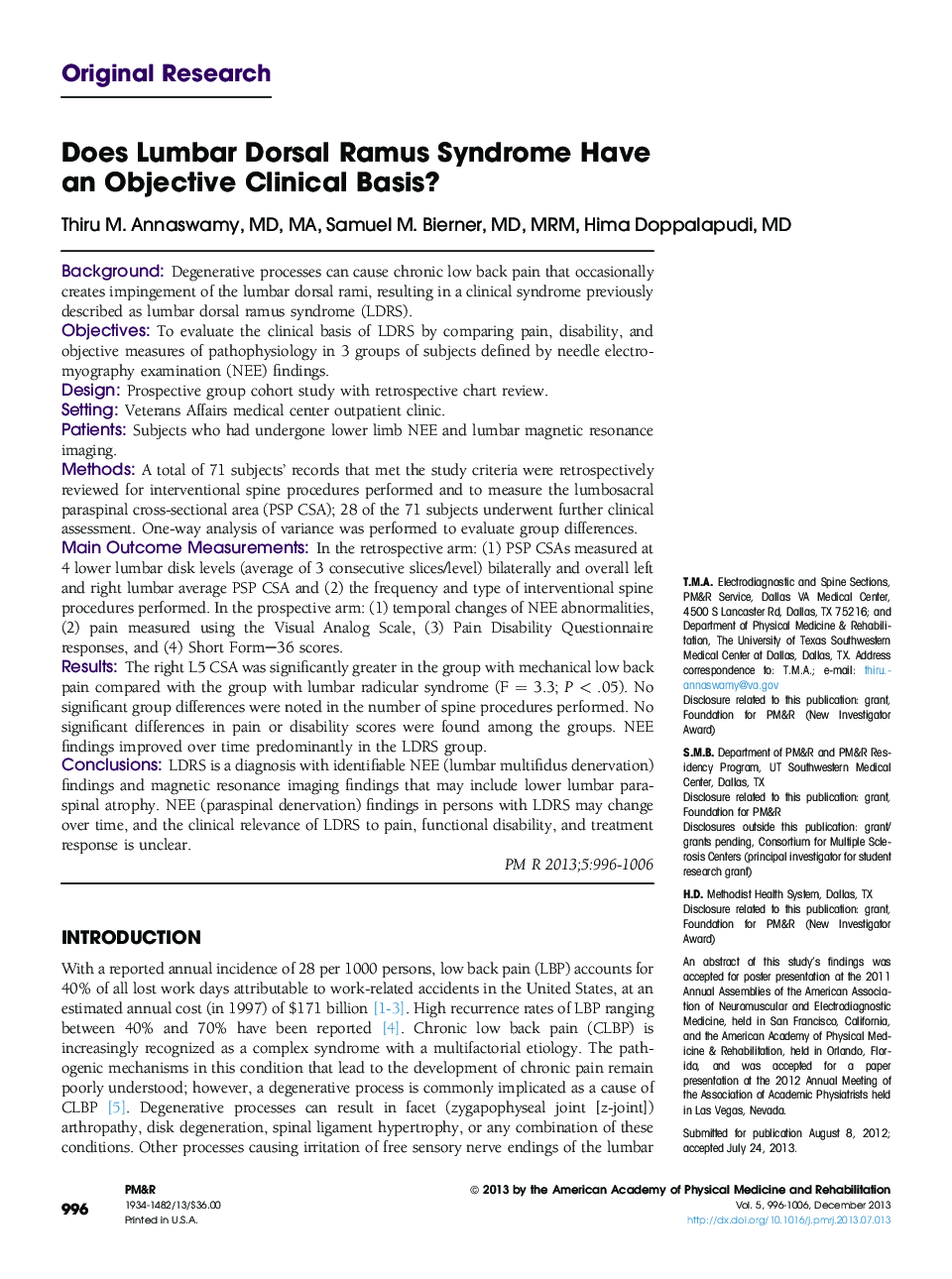| Article ID | Journal | Published Year | Pages | File Type |
|---|---|---|---|---|
| 2705180 | PM&R | 2013 | 11 Pages |
BackgroundDegenerative processes can cause chronic low back pain that occasionally creates impingement of the lumbar dorsal rami, resulting in a clinical syndrome previously described as lumbar dorsal ramus syndrome (LDRS).ObjectivesTo evaluate the clinical basis of LDRS by comparing pain, disability, and objective measures of pathophysiology in 3 groups of subjects defined by needle electromyography examination (NEE) findings.DesignProspective group cohort study with retrospective chart review.SettingVeterans Affairs medical center outpatient clinic.PatientsSubjects who had undergone lower limb NEE and lumbar magnetic resonance imaging.MethodsA total of 71 subjects' records that met the study criteria were retrospectively reviewed for interventional spine procedures performed and to measure the lumbosacral paraspinal cross-sectional area (PSP CSA); 28 of the 71 subjects underwent further clinical assessment. One-way analysis of variance was performed to evaluate group differences.Main Outcome MeasurementsIn the retrospective arm: (1) PSP CSAs measured at 4 lower lumbar disk levels (average of 3 consecutive slices/level) bilaterally and overall left and right lumbar average PSP CSA and (2) the frequency and type of interventional spine procedures performed. In the prospective arm: (1) temporal changes of NEE abnormalities, (2) pain measured using the Visual Analog Scale, (3) Pain Disability Questionnaire responses, and (4) Short Form–36 scores.ResultsThe right L5 CSA was significantly greater in the group with mechanical low back pain compared with the group with lumbar radicular syndrome (F = 3.3; P < .05). No significant group differences were noted in the number of spine procedures performed. No significant differences in pain or disability scores were found among the groups. NEE findings improved over time predominantly in the LDRS group.ConclusionsLDRS is a diagnosis with identifiable NEE (lumbar multifidus denervation) findings and magnetic resonance imaging findings that may include lower lumbar paraspinal atrophy. NEE (paraspinal denervation) findings in persons with LDRS may change over time, and the clinical relevance of LDRS to pain, functional disability, and treatment response is unclear.
